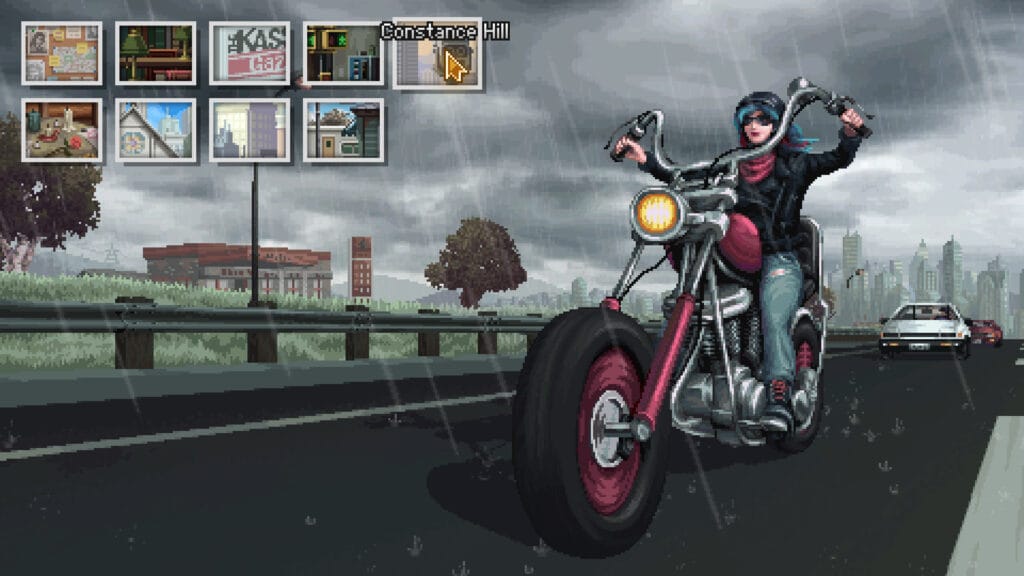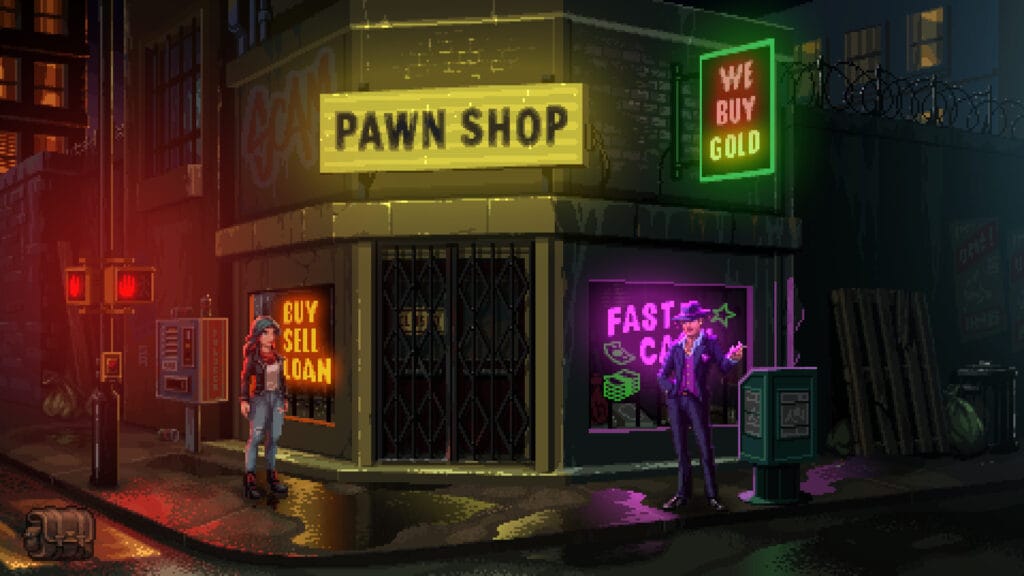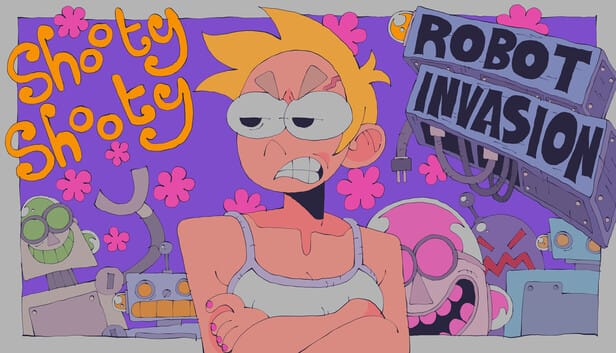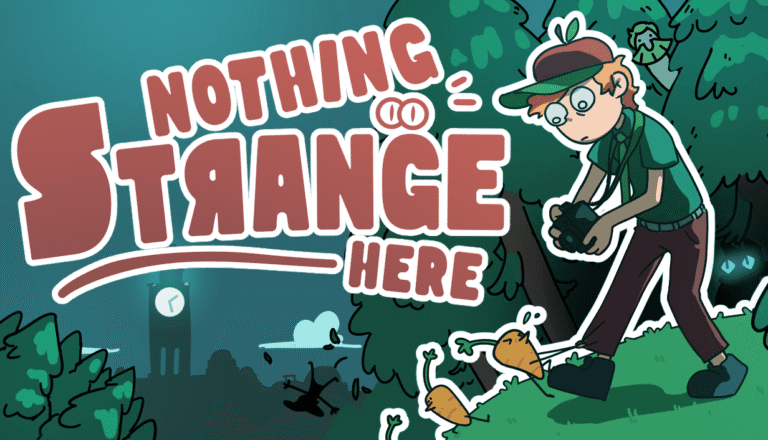The Rain Returns, Darker and Deeper
Nine years. That’s how long it took for Kathy Rain to earn a sequel, and for fans of Clifftop Games’ neo-noir point-and-click debut, it felt like an eternity. Kathy Rain 2: Soothsayer arrives not as a simple continuation but a thematic evolution—a sequel that wears its darkness like a badge and chooses grit over comfort. It doubles down on everything that defined the original: trauma, personal demons, detective work, and a jagged edge of the supernatural.
Set in 1998, three years after the first game’s events, Kathy is now a disillusioned private investigator in the fictional city of Kassidy. Broke, bitter, and half-drenched in whiskey, she’s quickly pulled into a serial murder case. The titular Soothsayer is killing prominent figures, and with a hefty bounty on their head, Kathy reluctantly grabs the opportunity to get back on her feet.
But money isn’t the real reason she stays in the case. What unfolds is a slow-burn descent into personal reckoning, cosmic horror, and an unforgettable character study.
A Broken Protagonist Worth Caring For

Kathy isn’t just gruff or edgy for show—she’s profoundly broken. Her character arc from a stubborn, idealistic journalist to a cynical PI is believable yet jarring. She’s alienated her friends, doesn’t speak to her institutionalized mother, and navigates the case with a biting wit that conceals emotional fragility.
Arielle Siegel’s vocal performance brings this inner chaos to life with haunting subtlety. Kathy swears like she breathes, masks vulnerability behind sarcasm, and yet when the mask slips—especially during the dream sequences and final act—it hits like a gut punch. The writing, to its credit, doesn’t glorify her pain. It lets her be ugly, selfish, and unlikable at times—but always human.
Supporting characters such as Eileen (the estranged friend), Lucas (the mentor figure), and Josh (a complicated cop connection) all feed into Kathy’s internal and external conflicts. While Eileen’s diminished role is a minor letdown, her scenes still pack an emotional punch.
The Soothsayer Case: A Puzzle of Flesh and Philosophy
The murder mystery at the heart of Soothsayer is paced with deliberation. Early investigations are rooted in grounded detective work—newspaper archives, dusty computers, and interview-style conversations. The murders have a ritualistic flair, and the killer’s ties to a hallucinogenic drug named Pyre inject a layer of urban decay. What begins as a gritty noir spirals into something stranger, touching on dreams, cult-like symbolism, and existential dread.

Yes, the story eventually veers into Twin Peaks territory with surreal horror. A long, cryptic villain monologue and dreamlike visuals challenge narrative coherence in the final act. For players grounded in realism, this will be a pivot point—either a profound expansion of themes or a misstep in tonal balance. Personally, I found the transition bold and thematically consistent with Kathy’s psychological unraveling, but it won’t work for everyone.
Storytelling Strengths
- Excellent pacing across six chapters and an epilogue
- Recurring motifs of guilt, isolation, and corrupted memory
- A consistent atmosphere blending noir with psychological horror
- Brilliant use of flashbacks and “evening mode” scenes to explore duality (daylight truth vs. nighttime introspection)
It’s not perfect. The narrative structure sometimes relies too much on exposition, and certain characters feel underexplored. Still, the emotional arc lands firmly.
Classic Point-and-Click Foundation with Modern Polish
Kathy Rain 2 doesn’t try to reinvent the point-and-click genre—it refines it. The one-click interface is intuitive, with a glowing cursor to indicate interactive elements. Kathy’s notebook serves as your narrative compass: logging suspects, clues, phone numbers, and objectives. It’s smartly organized and avoids clutter—something many modern adventure games fumble with.

The game’s six “days” unfold with increasing complexity. While day one is highly linear (a soft tutorial, essentially), later days give players freedom to explore and prioritize leads. You’ll ride the Katmobile between locations like crime scenes, nightclubs, a library, a flower shop, and a shadowy university. Some areas only open under specific conditions (e.g., nightfall), which adds strategic depth.
Puzzles: Hit and Miss, but Mostly Hit
Inventory-based challenges are front and center, complemented by logic puzzles and a few time-sensitive encounters. There are standout moments—like crafting an out-of-production brand of cigarettes or compiling a convincing haiku—that showcase the designers’ creativity.
Yet, not all puzzles are winners. A few verge on obtuse, requiring obscure item combinations or arbitrary sequences. One late-game moment involving hiding from pursuers becomes a trial-and-error grind. Thankfully, the game auto-restores from failure points, softening the frustration.
Despite the occasional stumbles, most solutions feel earned and satisfying.
A Retro Triumph
Pixel Art That Speaks Volumes
The visual aesthetic in Kathy Rain 2 is a masterclass in pixel art. Characters now sport detailed facial expressions, and environments—from rain-soaked alleys to eerie churches—are rendered with layered textures and lighting. There’s a scene where Kathy stands in theatrical spotlights that is genuinely cinematic.
Dynamic lighting and reflections push the Unity engine surprisingly far for a 2D title. And yes, it leans into retro nostalgia, but not at the expense of clarity or design elegance.
Atmosphere through Sound and Silence
Music is perhaps the game’s most underrated asset. From melancholic piano riffs to tension-building synths, the score shifts gracefully with tone. Sound design reinforces immersion: the rattle of typewriters, the patter of rain, Kathy’s motorcycle revving to life—all situate you in this 90s noir world.
Voice acting is superb. Arielle Siegel is the standout, but Shelly Shenoy (Eileen) and Ivy Dupler (as multiple characters) deliver nuanced, grounded performances. Dialogue flows with an authentic cadence, and the occasional humor prevents tonal stagnation.
Technical Performance and Final Considerations
From a performance standpoint, Soothsayer is stable and well-optimized. Load times are minimal, the UI is clean (though the auto-closing inventory is a recurring gripe), and there were no major bugs encountered during my playthrough.
Clifftop Games has clearly grown since their earlier titles (Kathy Rain and Whispers of a Machine). Soothsayer shows more confidence in design, stronger writing, and more complex systems—all while retaining the charm of its predecessors.
While Kathy Rain 2: Soothsayer is mostly polished, minor tweaks—such as adjustable inventory visibility and hint toggles—could enhance playability. The game doesn’t scream for major patches, but a post-launch quality-of-life update would be welcomed.
Final Verdict: A Clever, Flawed, Beautiful Noir Adventure

Score: 4.2 / 5
Pros:
- Emotionally resonant story with layered characters
- Stunning pixel visuals with dynamic effects
- Engaging mix of logic and inventory puzzles
- Excellent voice acting and immersive soundtrack
- Smartly structured narrative progression
Cons:
- Some puzzles are needlessly obscure
- Inventory UI can be clunky
- Linear pacing early on may bore impatient players
Who Will Enjoy This:
- Fans of narrative-driven adventures like Gabriel Knight or Oxenfree
- Players who appreciate slow-burn mysteries with emotional depth
- Gamers craving a retro-styled detective experience with mature themes
Who Might Not:
- Puzzle purists seeking constant interactivity over dialogue
- Players uncomfortable with narrative shifts into surreal or paranormal
- Those allergic to pixel art or slower pacing
Clifftop Games has something special here. If this sequel sells well, a third entry could be greenlit. Kathy Rain has the potential to become a perennial cult detective figure, and I genuinely hope this isn’t her last case.


